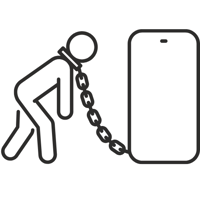Raising the first fully digital generation, together.
 Who We Are
Who We AreVillage to Raise is a parent-led initiative, not tied to any one school, but united by a shared goal: raising the first fully digital generation with intention. We are not only raising a generation of kids growing up with smart devices, social media, and AI — we are also a new generation of parents, aware of the dangers, reading the data, and the research behind it all. There’s no ancestral wisdom for digital-age parenting. No roadmap. But uniting and learning together is how we find our way. Village to Raise is our response: A space to learn, support one another, and make bold, connected choices to protect childhood in the digital age.
Our Mission
We support families in navigating the unique challenges of raising children in a digital world by:
Research & Learning
Growing together through research, global practices, and expert guidance.
Partnerships
Collaborating with schools and other educational institutions to foster safer, smarter digital habits for the next generation.
Community
Building a community of tech-conscious parents who share support and insights.
What is the Pledge?
Is an online tool that helps parents agree to delay with others in your community.
The more of us who sign, the more powerful it becomes.
Why should I sign the Pledge?
If we all agree to delay giving our children smartphones, and instead give them brick phones until
at least the end of 8th grade, the peer pressure instantly reduces.
Saying no can feel impossible when you’re acting alone. Acting collectively makes it infinitely easier.
What’s the problem with kids and early social media and smartphone access?
When children first started getting smartphones and access to social media a decade ago, there was no research about their impact. Now there is, and it’s overwhelming. Exposing children to things their brains aren’t yet developed enough to deal with can cause a whole host of problems, from triggering anxiety and eating disorders to opening the door to cyberbullying or sexual predators, according to the latest research.
When we give our children access to the whole world in their pockets, we give the whole world access to our children.


.png?width=200&height=200&name=harmful%20(1).png)




